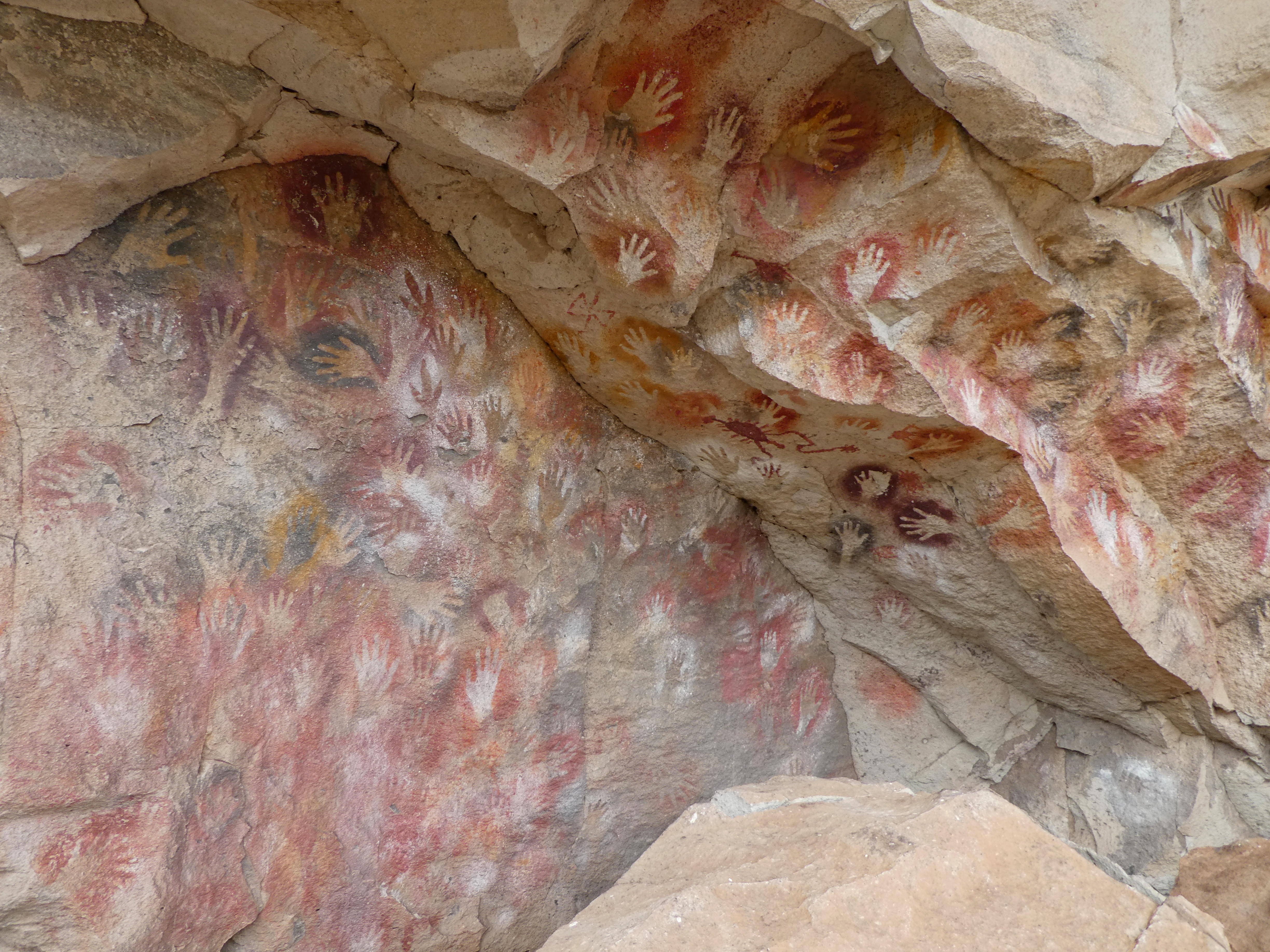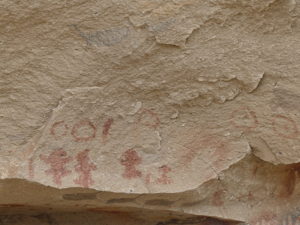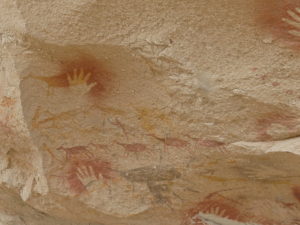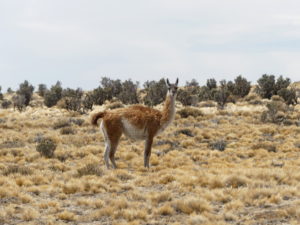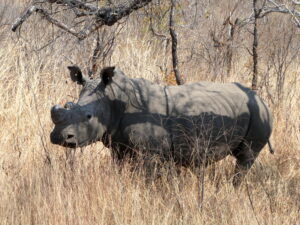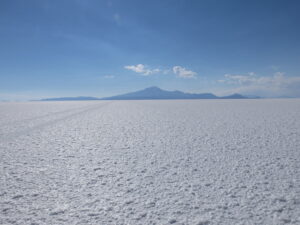The third leg of our trip took us across the border to Argentina. Our first stop in this desert landscape transported us thousands of years back in time to the Caves of Hands, Cuevas de las Manos.
The overall journey through this gorgeous mountain landscape and desert pampas began at Puerto Montt, Chile, and ended at Ushuaia, Argentina. We spent nearly a month driving and ferrying along three thousand kilometers, from north to south.
THE ROUTE
You can continue south along the Carretera Austral of Chile through the fjords and snow-capped mountains, but you dead end at O’Higgins and normally must double back to the city of Coyhaique. Instead, we crossed over to Argentina after Rio Tranquilo’s Marble Caves so we could visit El Chalten and El Calafate, then cut back to Chile for Torres del Paine National Park.
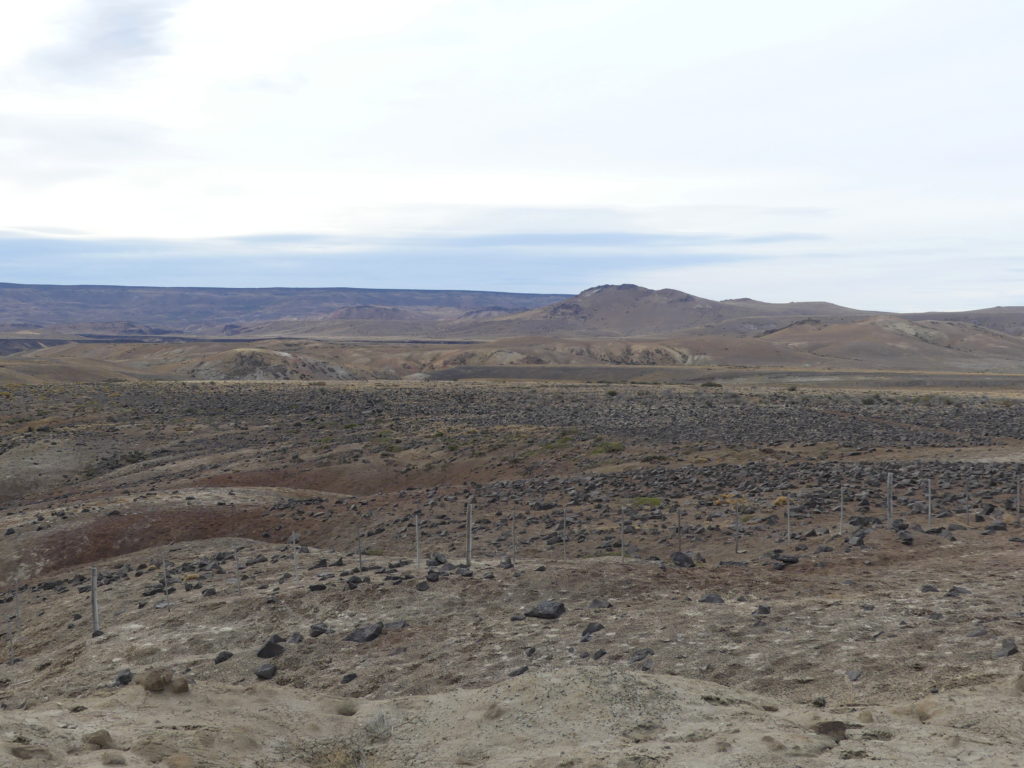
The contrast with the western slope of the mountains is startling. Departing from the richly watered and mountainous terrain of Chile, we switched to flat, scrubby desert occasionally interrupted by low desert plateaus or canyons. And, unlike the highly variable roads of the Carretera, Route 40 and connecting roads are mostly asphalt so you can speed along at over 100 kph.
Top tip 1: Fill up the car’s tank wherever you can. There are many hundreds of kilometers between petrol stations.
Just beware of those many sections, untouched by road crews, where the gouges (or baches in Spanish) have hollowed the road or rifts have made knife-like edges. They tend to ruin tires and suspensions.
Top tip 2: Look out for dark skid marks made by those who decelerated rapidly to 30kph to avoid serious damage. Use whatever part of the road seems less pitted – left side, right side, margin…
CUEVAS DE LAS MANOS
Put your hands together, we exhort these days, in celebration.
For about 10000 years, the people of one fertile canyon on Argentina’s Patagonian pampas put their hands together in a manner we can still view.
The canyon looked a bit different 13000 to 1200 years ago when the cave people still lived here, but you have an idea of the splendor. The bright green comes from an introduced non-native tree that pushed out native ones.
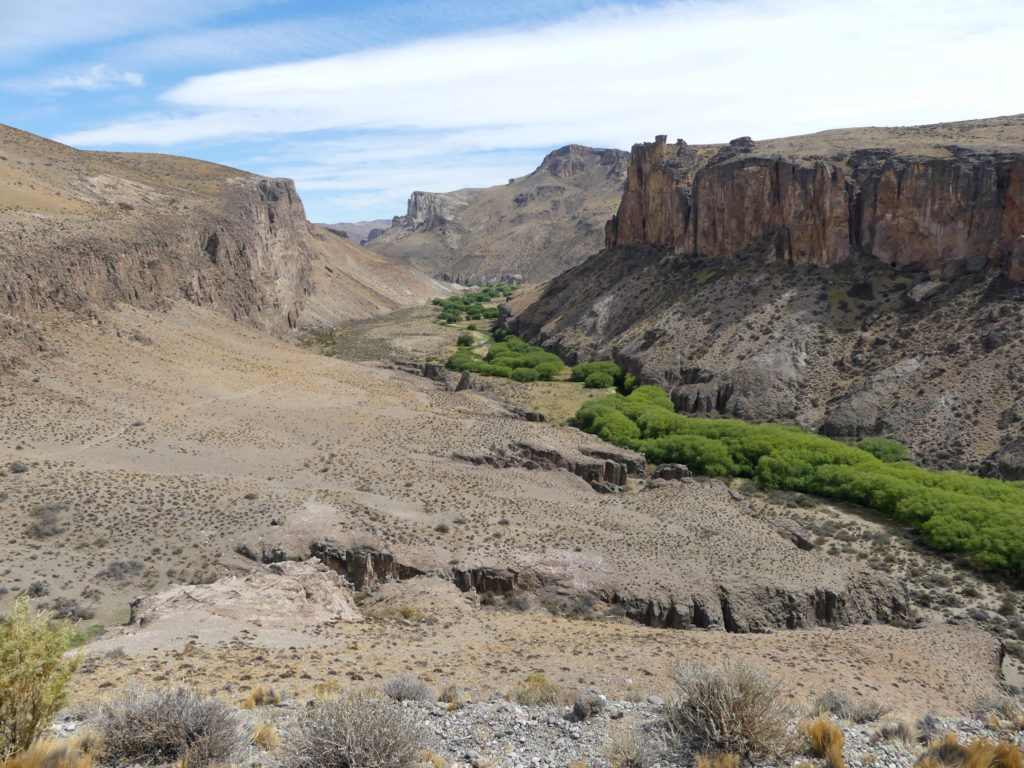
In communal rituals within their cave shelters, the tribal people spray-painted around their hands while they touched the rock surface (technically, a negative image).
Every hand print is done the same way, and the process also left a kind of color aura around each hand. In a myriad of colors, the young (babies too) and old, normal and deformed, imprinted their hands – along with rhea or puma paws – on all available surfaces of the soft colorful rock.
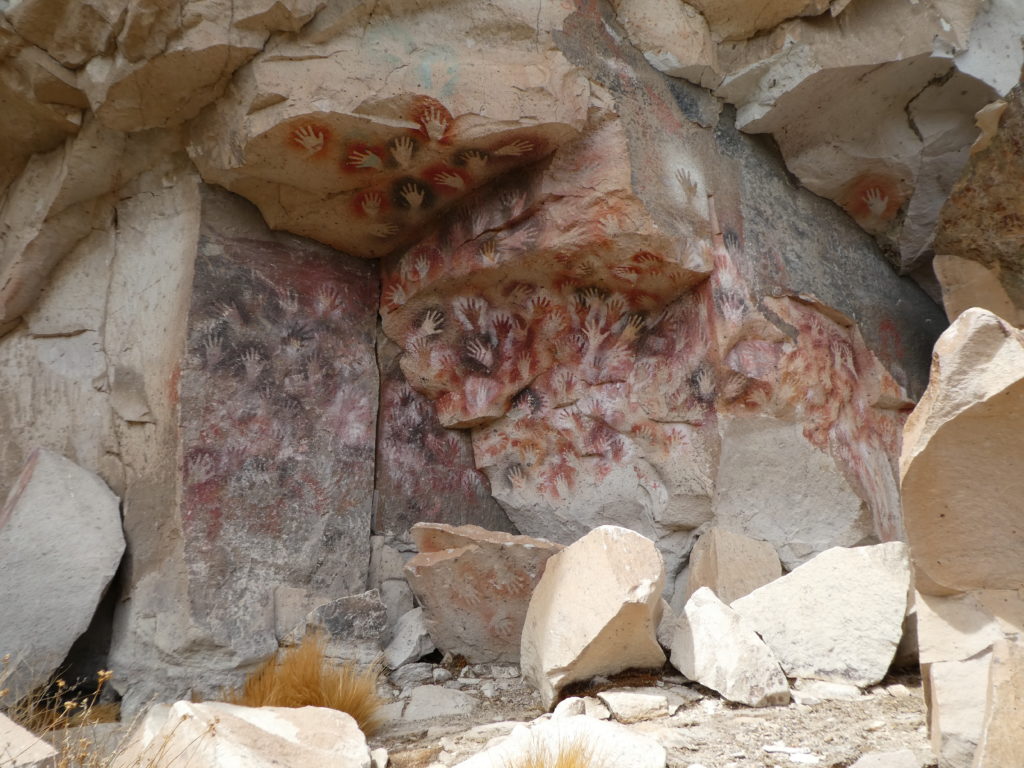
Their paintings also celebrated the good things of life, especially the wild llama-like guanaco, their principal food source. They depicted hunting scenes with lessons on how best to catch their prey with bolas, a trio of rocks attached to rope – until, as they sadly also recorded, their food source stopped flourishing. They tracked the birth cycle of the animals and the seasons.
Notice the guanaco images and other animals adorning the area above the hands in this wall.
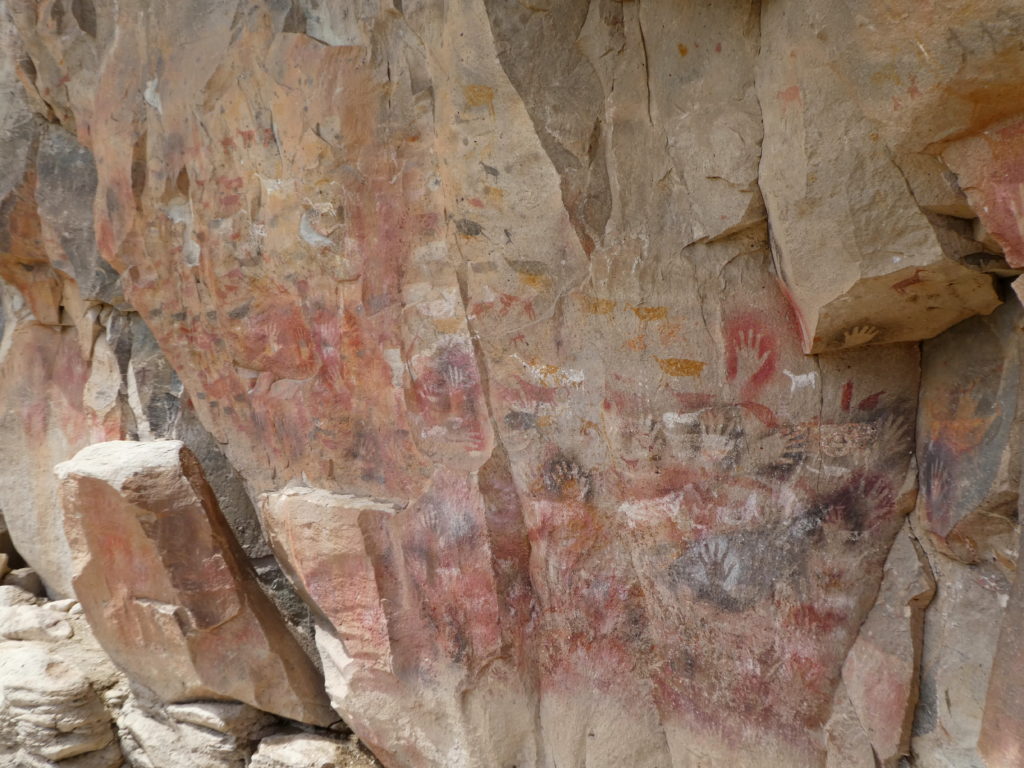
A primer on how to hunt guanaco. On the right, you see little human figures herding the guanaco and, on the left, the black thread-like lines of the bola (ropes and stones) to be tossed around the legs of the animal.
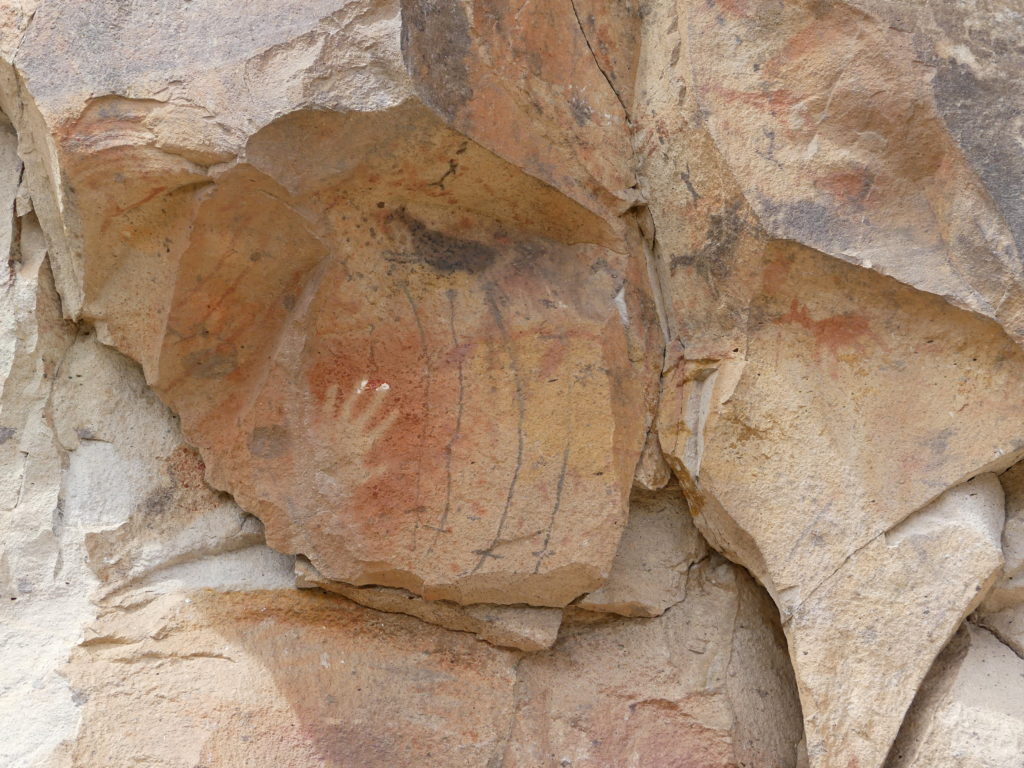
One of the most remarkable images at Cuevas de las manos – after the hands. The small human figures are driving the guanaco into one canyon – not painted, but just using the natural vertical cleft in the rock surface. Across the horizontal canyon below, other guanaco seem to be looking on.
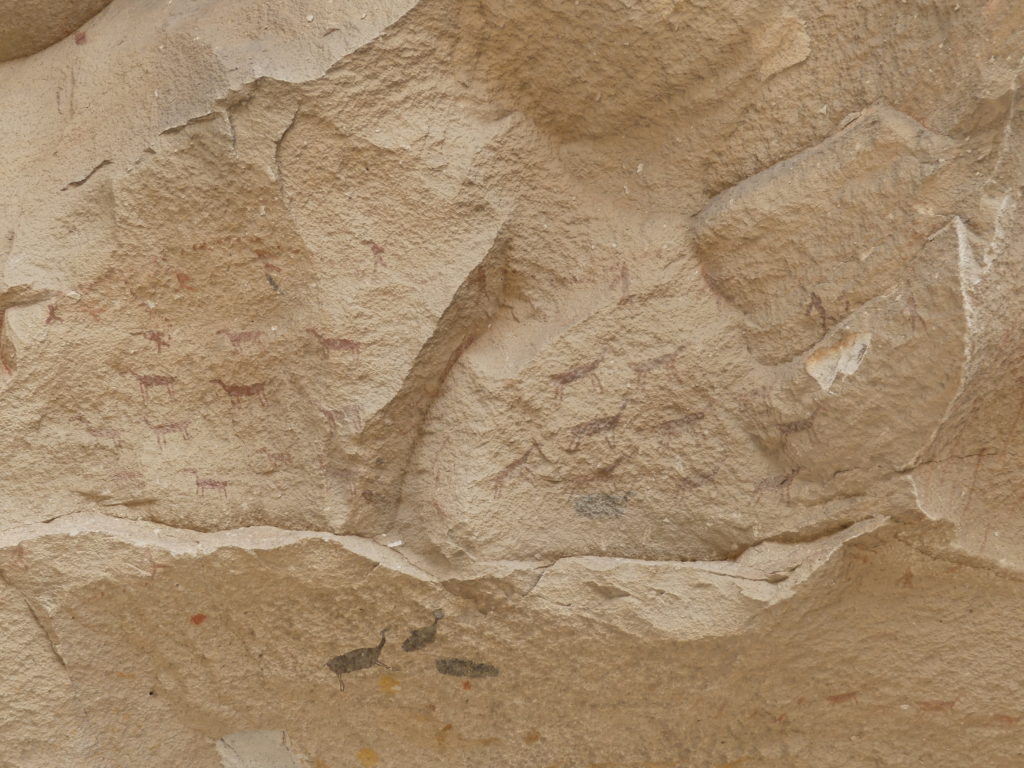
If you turn away from this image at the site, you can see this exact terrain across the canyon valley. That’s shown in the next photo. Everyone on the site tour emits a cry of surprise and delight when they turn to compare the rock image with the real valley.
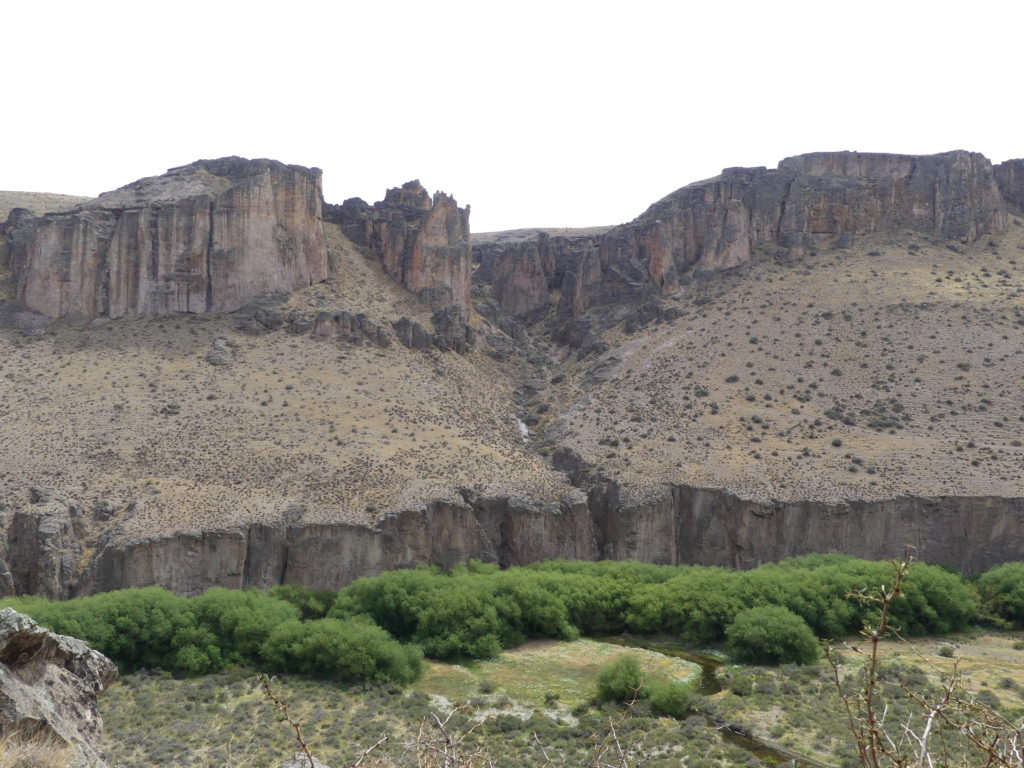
Pregnant guanaco, familial figures and a set of counting circles to keep track of the birth cycle. The tribes were quite scientific about their livelihood.
Here we found a display of a hunting scene with a guanaco herd including a young guanaco among them.
The tiny human figures carry a cross-like thing that represents the bola. Many images on the rocks portray pregnant animals.
Near the caves, we also saw a small herd of living guanaco. This one is making sure we don’t have a bola.
In the middle of these hands, you can just barely find a black lizard-like creature…a bit lost, we thought in the whole panel of imprints.

Beyond tracking their livelihood, the people playfully propelled paint-dipped rocks up to the ceiling to make dots. And in later years they added mythical creatures and symbolic geometric figures.
Toward the end of the period when the tribe thrived, images of dead guanaco appear, an indication perhaps of why the people needed to move elsewhere. We couldn’t help but see on this wall a kind of ghostly, struggling even desperate collage of images, whether intended or not.
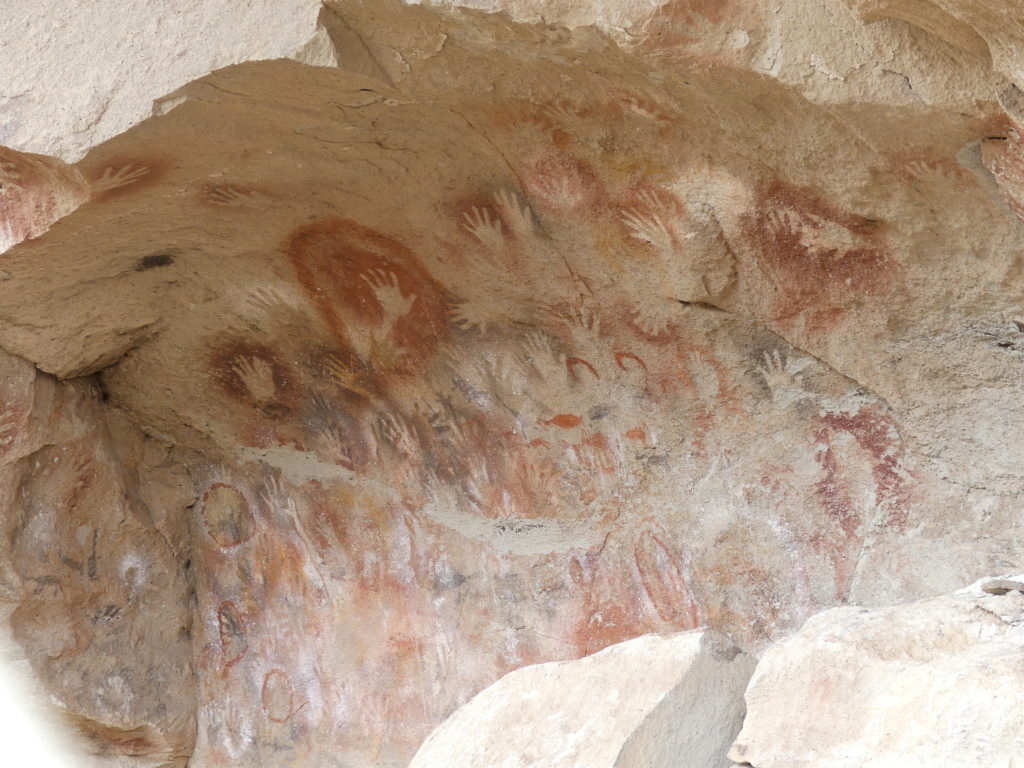
We have seen many examples of rock art over the years, but we were astonished at these exuberant displays so deserving of UNESCO World Heritage status. And so pleased that we diverted to this remarkable site, even though that made for a very long day’s drive south down Route 40 after crossing from Chile to Argentina.
(To enlarge any picture above, click on it. Also, for more pictures from Argentina & Chile, CLICK HERE to view the slideshow at the end of the itinerary page.)


